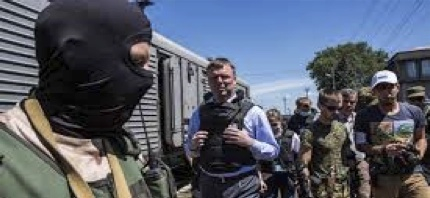The views and opinions expressed on the website are those of the authors and do not necessarily reflect the views or opinions of Niagara Foundation, its staff, other authors, members, partners, or sponsors.
By Jihan Dubose
Center for Public & Global Affairs Intern
August 13, 2015
Nearly one month ago, July 17 marked the one-year anniversary of Malaysia Flight 17’s destruction over Ukraine. Last year was a time which saw the deteriorating relationship between Russia and Ukraine explode in the annex of the former Ukrainian area of Crimea, culminating in the violence which ensued. For many international spectators, the events unfolding in Crimea were just waiting games to see the result of Russia and Ukraine jockeying for power in the peninsula. But for the victims of MH17 and their families, the political climate is the only sure facet to blame for the deaths of 298 people, and the reason why so many families have pivotal questions that remain unanswered.
Dutch Officials have led investigative efforts in the MH17 case, but suspicions on both Russian and Ukrainian sides are threatening to thwart their efforts to find and divulge the truth. In analyzing the rhetoric, Ukrainian, Russian, and Dutch officials have been careful with the way they have articulated the “facts” and specific in the way they explicate their positions. What we know for certain is that the plane debris and corpses recovered from the crash site were left for days before investigators were allowed onto the scene. We also know that of the 298 victims, two bodies have remained unfound. We know for certain that the plane was indeed struck by an object, before dismantling and falling to the ground; but from the way investigators from all sides of the conflict describe this object, this discrepancy necessitates that more facts be declared.
According to the Dutch Investigative report draft, “evidence indicates that a Buk (a Russian surface-to-air missile) was used and launched from a village in a rebel-controlled territory” (CNN, Laura Smith-Spark). In the preliminary report on the crash, the Dutch investigators said the MH17 “broke apart in the air after a burst of high-energy objects hit it from the outside” (CNN, Laura Smith-Spark).As previously noted, Dutch officials claim that the crash evidence points to a surface-to-air missile; and while the Kremlin is willing to believe the object was an air-to-air missile, it repudiates claims that the object was Russian-manufactured.
Surprisingly, Russia’s acceptance of the air-to-air missile theory is not shared by Ukraine’s pro-Russian area of Donetsk. According to Alexander Borodai, the former self-proclaimed rebel Prime Minister of Donetsk believes,“ Ukrainian forces either shot the plane down with a surface-to-air missile or one of its own fighter jets” (CNN, Laura Smith-Spark). He goes on to postulate that “We didn’t have motives and desire to do that, and it is obvious that Ukrainians have them. I can’t say about desire, but notice is obvious that the crash of this plane was beneficial to them” (CNN, Laura Smith-Spark).
The subtle nuances in word choices amongst the various investigative efforts are producing superfluously confusing causes which, if left unchecked will become the victims’ families closest possession of the truth. So will the various sides of the Crimean conflict be able to put their clever ability to spin words to the side and support the evidence to give those impacted by MH17 some peace of mind? It’s not clear whether or not the word games will cease, but Dutch officials are “optimistic that the case will one day be brought to court” (CNN, Laura Smith-Spark).

